1. O'Doherty J, Winston J, Critchley H, Perrett D, Burt DM, Dolan RJ. Beauty in a smile: the role of medial orbitofrontal cortex in facial attractiveness. Neuropsychologia. 2003; 41:147–155. PMID:
12459213.
2. Schmidt KL, Cohn JF, Tian Y. Signal characteristics of spontaneous facial expressions: automatic movement in solitary and social smiles. Biol Psychol. 2003; 65:49–66. PMID:
14638288.

3. Goldstein RE. Study of need for esthetics in dentistry. J Prosthet Dent. 1969; 21:589–598. PMID:
5254499.

4. Sarver DM. The importance of incisor positioning in the esthetic smile: the smile arc. Am J Orthod Dentofacial Orthop. 2001; 120:98–111. PMID:
11500650.

5. Ackerman JL, Ackerman MB, Brensinger CM, Landis JR. A morphometric analysis of the posed smile. Clin Orthod Res. 1998; 1:2–11. PMID:
9918640.

6. Frush JP, Fisher RD. The dynesthetic interpretation of the dentogenic concept. J Prosthet Dent. 1958; 8:558–581.

7. Hulsey CM. An esthetic evaluation of lip-teeth relationships present in the smile. Am J Orthod. 1970; 57:132–144. PMID:
5263359.

8. Akyalcin S, Frels LK, English JD, Laman S. Analysis of smile esthetics in American Board of Orthodontic patients. Angle Orthod. 2014; 84:486–491. PMID:
24160996.

9. Krishnan V, Daniel ST, Lazar D, Asok A. Characterization of posed smile by using visual analog scale, smile arc, buccal corridor measures, and modified smile index. Am J Orthod Dentofacial Orthop. 2008; 133:515–523. PMID:
18405815.

10. Kiekens RM, Kuijpers-Jagtman AM, van't Hof MA, van't Hof BE, Straatman H, Maltha JC. Facial esthetics in adolescents and its relationship to “ideal” ratios and angles. Am J Orthod Dentofacial Orthop. 2008; 133:188.e1–188.e8.

11. Yu X, Liu B, Pei Y, Xu T. Evaluation of facial attractiveness for patients with malocclusion: a machine-learning technique employing Procrustes. Angle Orthod. 2014; 84:410–416. PMID:
24090123.

12. Havens DC, McNamara JA Jr, Sigler LM, Baccetti T. The role of the posed smile in overall facial esthetics. Angle Orthod. 2010; 80:322–328. PMID:
19905858.

13. Chang CA, Fields HW Jr, Beck FM, Springer NC, Firestone AR, Rosenstiel S, et al. Smile esthetics from patients' perspectives for faces of varying attractiveness. Am J Orthod Dentofacial Orthop. 2011; 140:e171–e180. PMID:
21967955.

14. Springer NC, Chang C, Fields HW, Beck FM, Firestone AR, Rosenstiel S, et al. Smile esthetics from the layperson's perspective. Am J Orthod Dentofacial Orthop. 2011; 139:e91–e101. PMID:
21195262.

15. Schabel BJ, Franchi L, Baccetti T, McNamara JA Jr. Subjective vs objective evaluations of smile esthetics. Am J Orthod Dentofacial Orthop. 2009; 135(4 Suppl):S72–S79. PMID:
19362269.

16. Dahlberg G. Statistical methods for medical and biological students. Br Med J. 1940; 2:358–359.
17. Campbell CM, Millett DT, O'Callaghan A, Marsh A, McIntyre GT, Cronin M. The effect of increased overjet on the magnitude and reproducibility of smiling in adult females. Eur J Orthod. 2012; 34:640–645. PMID:
21791712.

18. Torrance GW. Measurement of health state utilities for economic appraisal. J Health Econ. 1986; 5:1–30. PMID:
10311607.

19. Pinho S, Ciriaco C, Faber J, Lenza MA. Impact of dental asymmetries on the perception of smile esthetics. Am J Orthod Dentofacial Orthop. 2007; 132:748–753. PMID:
18068592.

20. Sarver DM, Ackerman MB. Dynamic smile visualization and quantification: Part 2. Smile analysis and treatment strategies. Am J Orthod Dentofacial Orthop. 2003; 124:116–127. PMID:
12923505.

21. Lan HW, Cheng HC, Lee SY, Wang WN, Tsai CY. Changes in the smile after orthodontic treatment. Chin Dent J. 2006; 26:17–25.
22. Grippaudo C, Oliva B, Greco AL, Sferra S, Deli R. Relationship between vertical facial patterns and dental arch form in class II malocclusion. Prog Orthod. 2013; 14:43. PMID:
24326093.

23. Giuntini V, Baccetti T, Defraia E, Cozza P, Franchi L. Mesial rotation of upper first molars in Class II division 1 malocclusion in the mixed dentition: a controlled blind study. Prog Orthod. 2011; 12:107–113. PMID:
22074834.

24. Islam R, Kitahara T, Naher L, Hara A, Nakasima A. Lip morphological changes in orthodontic treatment. Class II division 1: malocclusion and normal occlusion at rest and on smiling. Angle Orthod. 2009; 79:256–264. PMID:
19216599.
25. Ackerman MB, Brensinger C, Landis JR. An evaluation of dynamic lip-tooth characteristics during speech and smile in adolescents. Angle Orthod. 2004; 74:43–50. PMID:
15038490.
26. Sarver DM, Ackerman MB. Dynamic smile visualization and quantification: part 1. Evolution of the concept and dynamic records for smile capture. Am J Orthod Dentofacial Orthop. 2003; 124:4–12. PMID:
12867893.

27. Van Der Geld P, Oosterveld P, Berge SJ, Kuijpers-Jagtman AM. Tooth display and lip position during spontaneous and posed smiling in adults. Acta Odontol Scand. 2008; 66:207–213. PMID:
18622829.

28. Schabel BJ, Baccetti T, Franchi L, McNamara JA. Clinical photography vs digital video clips for the assessment of smile esthetics. Angle Orthod. 2010; 80:490–496. PMID:
20482353.

29. Ackerman MB, Ackerman JL. Smile analysis and design in the digital era. J Clin Orthod. 2002; 36:221–236. PMID:
12025359.
30. Celik E, Polat-Ozsoy O, Toygar Memikoglu TU. Comparison of cephalometric measurements with digital versus conventional cephalometric analysis. Eur J Orthod. 2009; 31:241–246. PMID:
19237509.





 PDF
PDF ePub
ePub Citation
Citation Print
Print



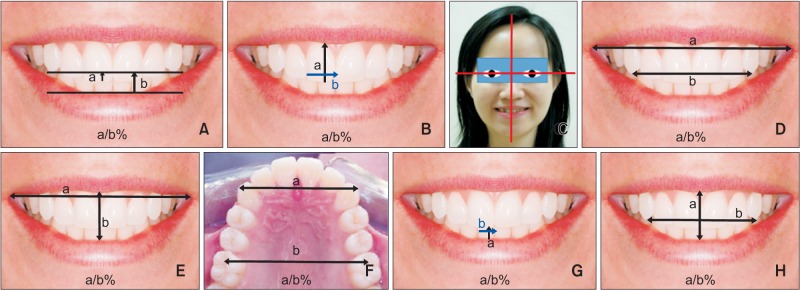
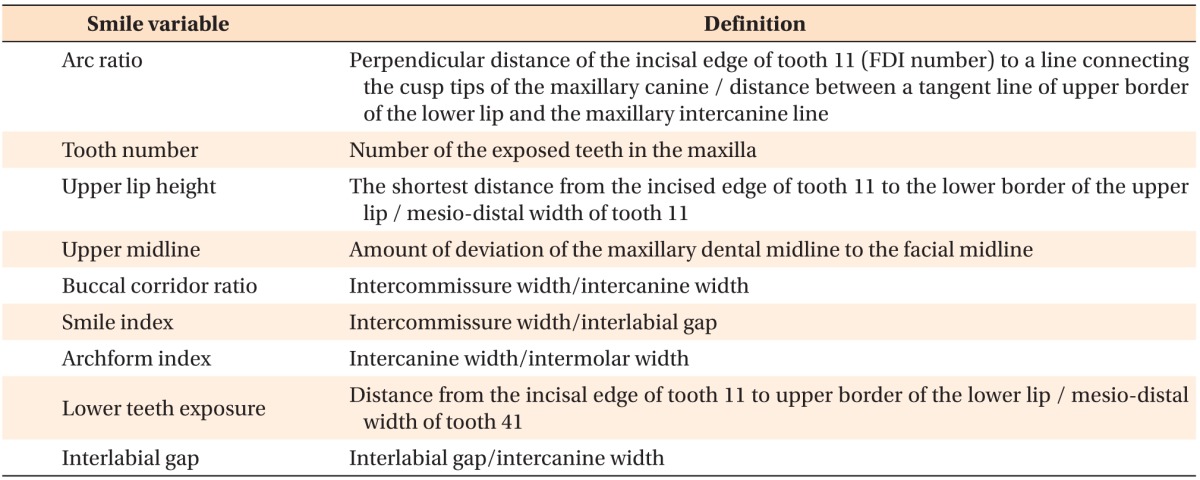
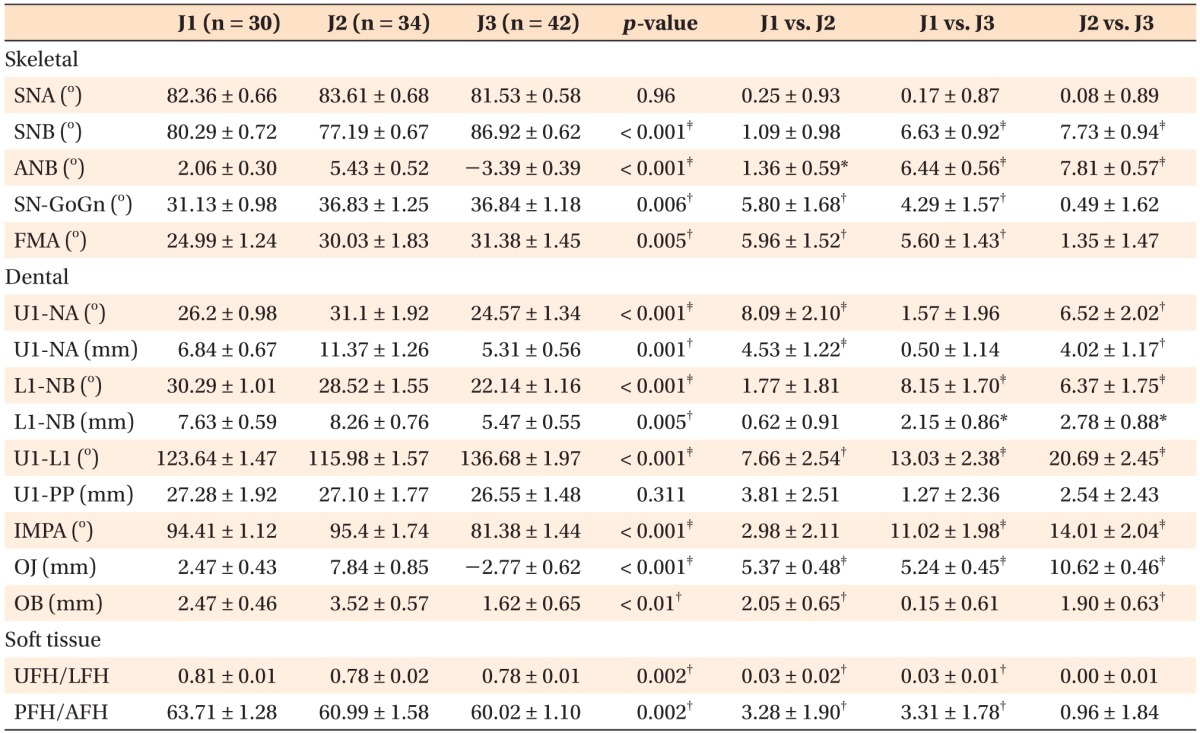

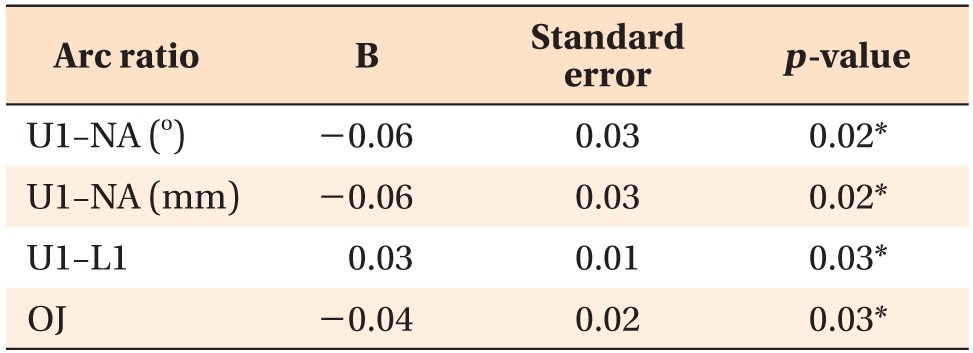
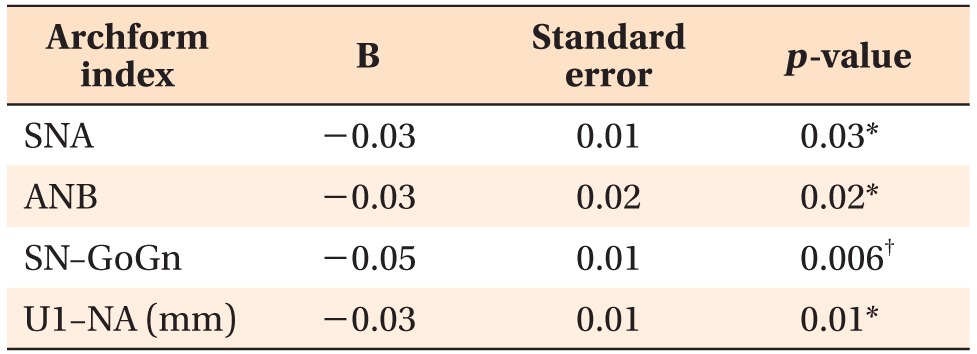
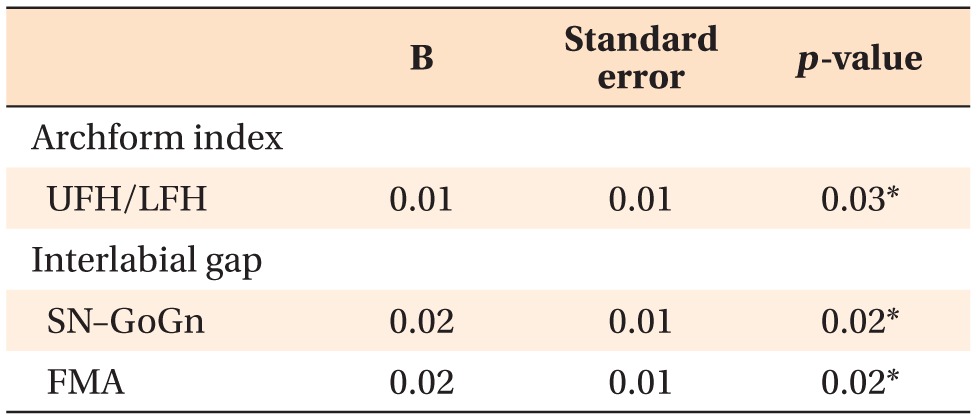
 XML Download
XML Download